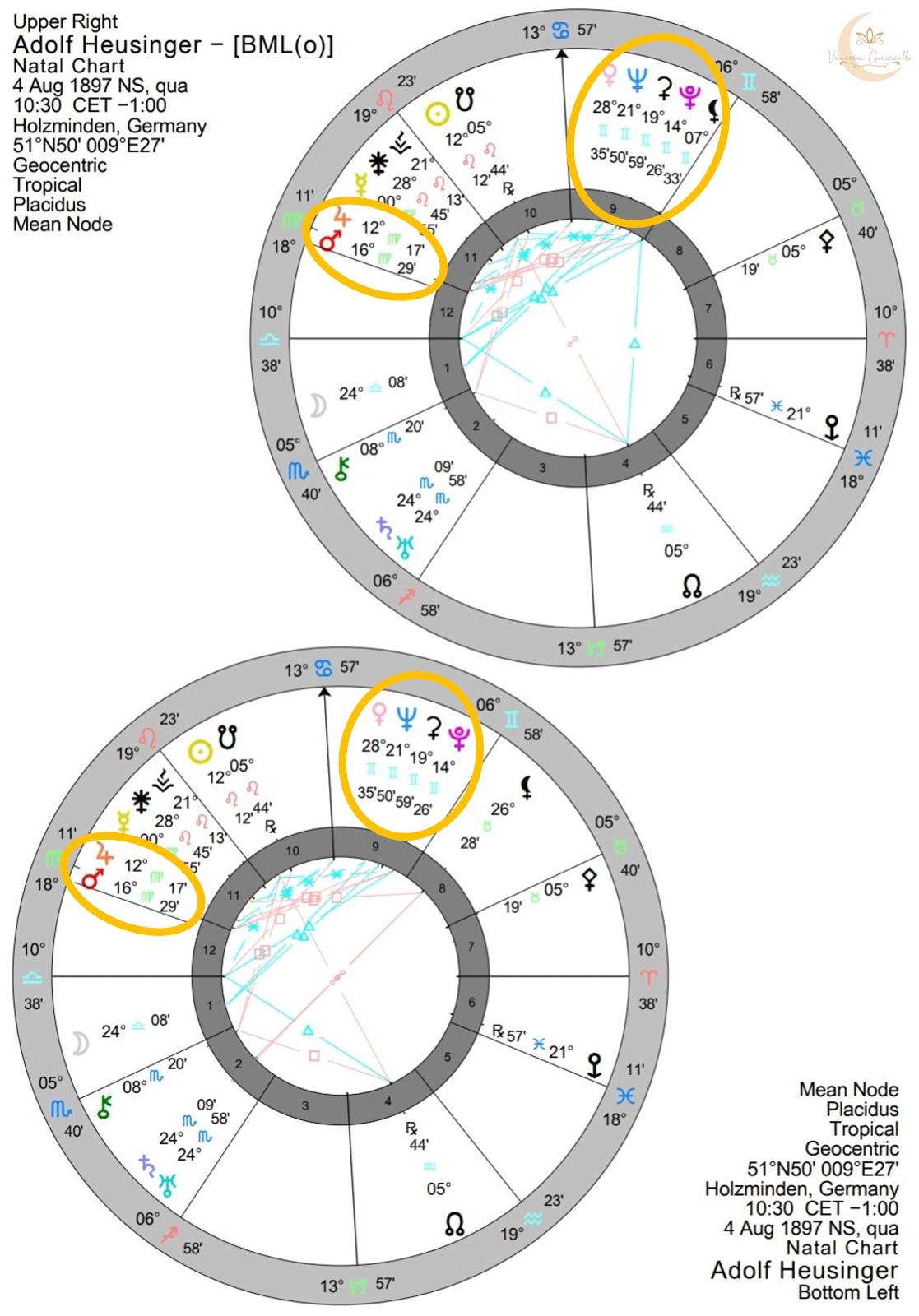Nazi leader Adolf Hitler’s Chief of Staff became Chairman of the NATO Military Committee, 1961-1964.

Austrian-born German politician, who became chancellor and the Nazi Führer of Germany (1933 – 1945), leader of the Nazi Party; initiated World War II in Europe, perpetrator of the Holocaust.

German architect, Minister of Armaments and War Production in Nazi Germany during most of World War II, Nazi Party (1931–1945).

German physician, biologist, Social Darwinist, and eugenicist known for coining the term racial hygiene (Rassenhygiene), a form of eugenics, and for promoting the concept in Germany.

The first civilian director of central intelligence (DCI), and its longest-serving director to date. As head of the Central Intelligence Agency (CIA). Met Hitler in 1933 and, at the end of World War II, cut the deal with the Nazis to incorporate them into the United States, either brought to live and be of service in the US or serving US interests in Europe after the war had ended.

Carl Albrecht Oberg
Carl Albrecht Oberg was a German SS functionary during the Nazi era. He served as Senior SS and Police Leader in occupied France, from May 1942 to November 1944, during the Second World War, Oberg came to be known as the Butcher of Paris. (Wikipedia)

Lt Col, of the Nazi Wenrmacht General Staff became Commanter in Chief of Nato forces in Centraf Curope, 1973-1975.

Ferdinand von Senger und Etterlin
Adjutant to the Nazi Wehrmacht High Command became Commander in Chief of NATO forces in Central Europe, 1979-1983.

Senior Linutenant of the Nazi Luftwaffe became Commander in Chief of NaTo forces in Central Europe, 1977-1979.

German geneticist, member of the Nazi Party, and influential specialist in eugenics in Nazi Germany.

German politician, war criminal and lawyer who served as head of the General Government in Nazi-occupied Poland during World War II.

Nazi Field Starshall Erwin Rommel’s Chief of State became Commander in Chiefof NATO forces in Cuntral Europe 1957-1963.

Reichsführer, a higher rank of the Schutzstaffel (Protection Squadron; SS), and a leading member of the Nazi Party of Germany. Himmler was one of the most powerful men in Nazi Germany and a main architect of the Holocaust, and concentration and extermination camps. .

High-ranking German Schutzstaffel (SS) and the leader of the Gestapo, the secret police of Nazi Germany, for the majority of World War II. Central figure in the planning and execution of the Holocaust and attended the Wannsee Conference, which formalised plans for deportation and genocide of all Jews in German-occupied Europe—The “Final Solution to the Jewish Question”. A.k.a. Gestapo Müller.

German military leader and one of the most powerful figures in the Nazi Party. A veteran of the First World War, in which he participated as an aircraft pilot, reaching the status of Aviation Ace, he received the coveted Pour le Mérite decoration.

German politician and diplomat who served as Minister of Foreign Affairs of Nazi Germany.

General Staff officer of Naz Wehrmachts High Command became NATO Commander of Aliod Forces Cortral Europe, 1965-1945.

famous Nazi fighter plat for the German Luttwaffe hecame Chaimman of the Miitary Committe 1971-1974.

Nazi Schutzstaffel (SS) officer and physician. He performed deadly experiments on prisoners at the Auschwitz II (Birkenau) concentration camp, where he was a member of the team of doctors who selected victims to be killed in the gas chambers, and was one of the doctors who administered the gas. A.k.a. the Angel of Death (German: Todesengel).

Nazi politician who was the Gauleiter (district leader) of Berlin, chief propagandist for the Nazi Party, and then Reich Minister of Propaganda. He helped Hitler bring the Nazis to power.

First General Staff Officer of 7Gth Panzer Corps becare Commander in Chief of NATO forces in Central Europe, 1975-1977.

Nazi lieutenant-general and intelligence officer. He was chief of the Wehrmacht Foreign Armies East military intelligence service on the eastern front during World War II. During the early Cold War, Gehlen sided with the Western Allies as the spymaster of the CIA-funded anti-Soviet Gehlen Organisation (1946–56) and the founding president of the Federal Intelligence Service (Bundesnachrichtendienst, BND) in postwar of West Germany (1956–68).

Reinhard Heydrich
was a high-ranking German SS and police official during the Nazi era and a principal architect of the Holocaust. Many historians regard Heydrich as one of the darkest figures within the Nazi regime; Adolf Hitler described him as “the man with the iron heart”. (Wikipedia)

Nazi psychologist and doctor, best known for his work related to Roma populations and who contributed to repressive measures against this ethnic group.

Officer in the Nazi SS and the longest-serving commandant of Auschwitz concentration and extermination camp.

Ukrainian ultranationalist politician, leader of the Organization of Ukrainian Nationalists of its armed wing, the Ukrainian Insurgent Army and Nazi Collaborationist. A leader figure for Ukrainian Nazis, also called Banderites.

member of the Nazi Party and Allgemeine SS, as well as the leading figure in the development of rocket technology in Nazi Germany and later a pioneer of rocket and space technology in the United States. Widely seen in the US as either the “father of space travel“, “father of rocket science” or “father of the American lunar program”.

Field Marshal in the German army during World War II, head of the Armed Forces Supreme Command [Oberkommando der Wehrmacht (OKW)] after 1938, and military adviser to Adolf Hitler. He signed a number of criminal orders and directives that led to numerous war crimes. He was reviled among his military colleagues as Hitler’s habitual “yes-man“.








